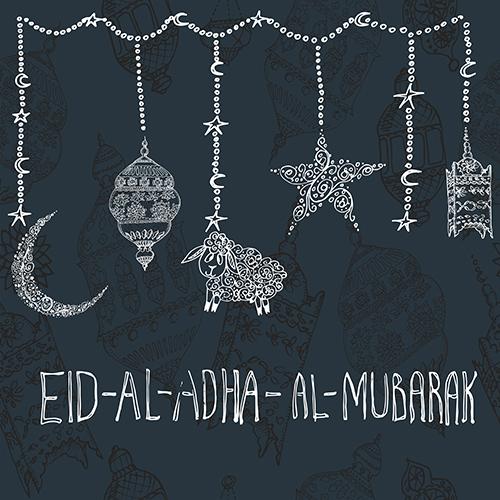Qurbani in Islam
Upon
removing his blindfold, he looked down and saw in front of him a
slaughtered ram, with Ismail standing by his side; which was the moment
that Prophet Ibrahim realised he had been given a test from Allah SWT.
The
significance of Qurbani is Prophet Ibrahim’s willingness to sacrifice
his most precious belonging in his devotion to Allah SWT.
The Concept of Qurbani
Allah
SWT liked Prophet Ibrahim’s actions so much that the sacrifice of the
animal was made obligatory upon Muslim’s during Hajj.
The
notion behind this is simple: if you were to raise and nurture an
animal as your pet, that animal would become very dear to you. To then
go on and slaughter that beloved pet would be a difficult task, but a
sacrifice that is made for Allah’s will.
There are, however, certain factors to bear in mind for eligibility.
To
be eligible for Qurbani, one must be an adult Muslim of sound mind, and
one who is eligible for paying zakat. An adult family member would
normally pay the Qurbani for the remaining members of the family, along
with the children in the household, too.
It
is imperative to select an animal (sheep, goat, bull, cow, buffalo or
camel) that is in good health as there are particular sets of rules to
follow based on the health of the animal.
Goats
and sheep will count as one Qurbani, whereas a camel or buffalo count
as seven shares, due to the sheer size of the animal.
The
Qurbani meat should then be separated into three equal portions; one of
these portions should be kept for your home, the second be given to
friends and family, and the final portion is to be distributed amongst
those in need.
The
act of Qurbani is carried out between the 10th and 12th of Dhul Hijjah,
following on from the pilgrimage of Hajj and Eid-ul-Adha prayers.
Hajj: The Time of Year
The
pilgrimage involves encircling the Holy Kaaba a number of times. The
Kaaba is a large, black, square building which was built by Prophet
Ibrahim and Hazrat Ismail.
Many other rites of Hajj are performed during the pilgrimage, which is observed over the course of approximately six days.
Pilgrims
of Hajj are to wear certain attire during the pilgrimage. The dress
consists of plain, unstitched white garments for all. This attire is
known as Ihram and is to signify equality. It is a reminder that wealth,
culture, status, and materialism will not count for anything, and that
we are all going to return to the same place, with none of our worldly
possessions.
The rewards for Hajj are enormous, including renewal of faith and the promise of Paradise in the Hereafter.
The Obligation
The
act of Hajj is the fifth element of the Five Pillars of Islam; also
known as the five obligations commanded by Allah SWT upon every Muslim.
The other obligations are:
- Shahadah – meaning the declaration of one’s true faith and belief in Islam
- Salah – daily obligatory prayers, five times a day
- Zakah – the giving of a percentage of one’s profitable wealth to those in need
- Sawm – Fasting in the Month of Ramadan
- Hajj – the Holy pilgrimage to Mecca
The Celebration
Hajj
concludes with the occasion of Eid-ul-Adha, known as the festival of
sacrifice. Muslims around the world celebrate this occasion for
approximately three days.
On
the morning of this celebration, Eid salaah (Eid prayers) are performed
in congregation at the local Mosque. Following the submission of
prayers, many visit with their family and friends, exchange
congratulations, wear their best clothes, give gifts and enjoy a
delicious feast.
It
is only following the completion of Eid salaah that the act of Qurbani
is carried out, and the distribution of the Qurbani meat is arranged
accordingly.
Celebrate Qurbani with Muslim Aid
Many Muslim’s donate their Qurbani to a charity, such as Muslim Aid, in order to carry the Qurbani out on their behalf.
The
meat is then separated into three portions; two of which are delivered
directly to you, and the third one being distributed amongst those in
need.


No comments:
Post a Comment